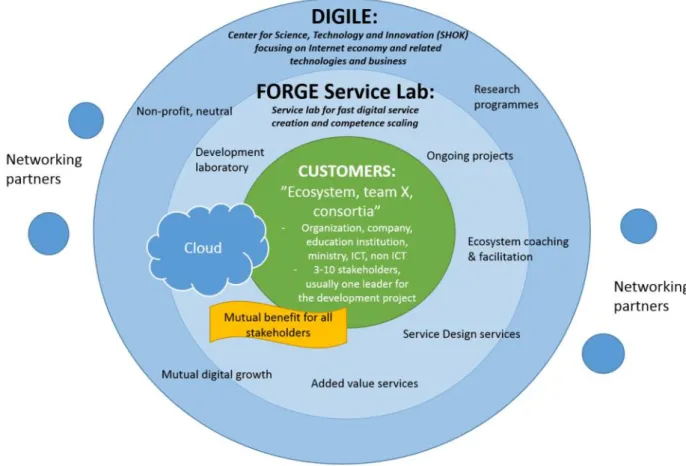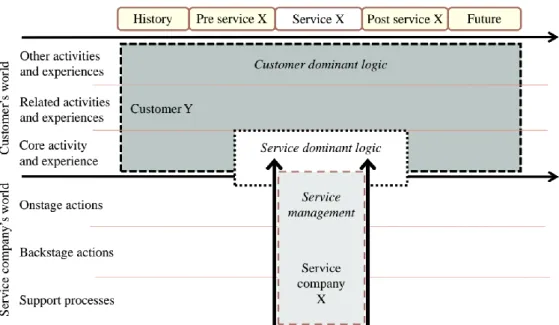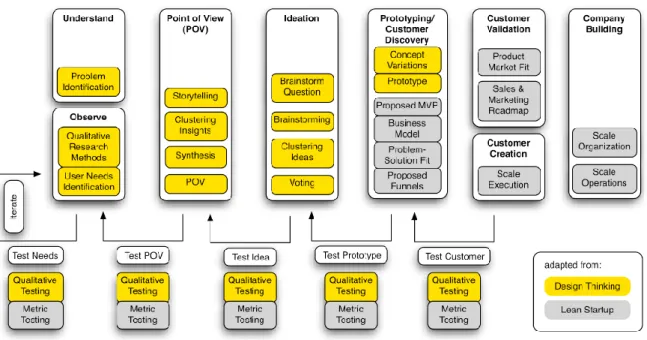As a result of the research, the concept of Service Design Coach was created with a focus to add support and value to the service process of FORGE Service Lab. The result of this thesis will be a Service Design Coach concept, which will allow the development of the project to better incorporate customers and their perspectives.
Objective of the thesis
One method of including the customer's voice in the development process is a discipline called service design. Service design is a holistic view used to understand the customer's world and embrace the value created through the service (Helle 2010).
Structure of the thesis
The study follows a service design process, specifically the Double Diamond model, which uses the first three phases but omits the fourth phase. At the end of chapter three, the created concept of Service Design Coach is presented.
Key concepts of the thesis
Within the discussion of tools, knowledge from research is presented to the reader. Within this thesis, the client is represented by a B2B (Business to Business) company or organization that purchases services from DIGILE.
The case company DIGILE and FORGE Service Lab
The methods used in the Service Lab are Business Models, Service Design, Service Development and Service Delivery. At the center are customers, project groups using the FORGE Service Lab to create new digital services with cloud capacity and business support from DIGILE.
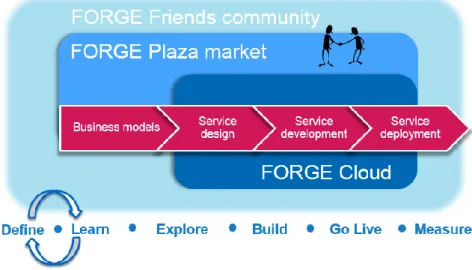
Service Marketing in academic discussion
Service-Dominant Logic and concept of value
Lusch and Vargo (2006) go on to state that value in use suggests that the customer determines the value received during the service process. Any company that wants to understand the logic of dominant service should consider the value proposition for the customer, the benefits that the customer receives from the company's services.
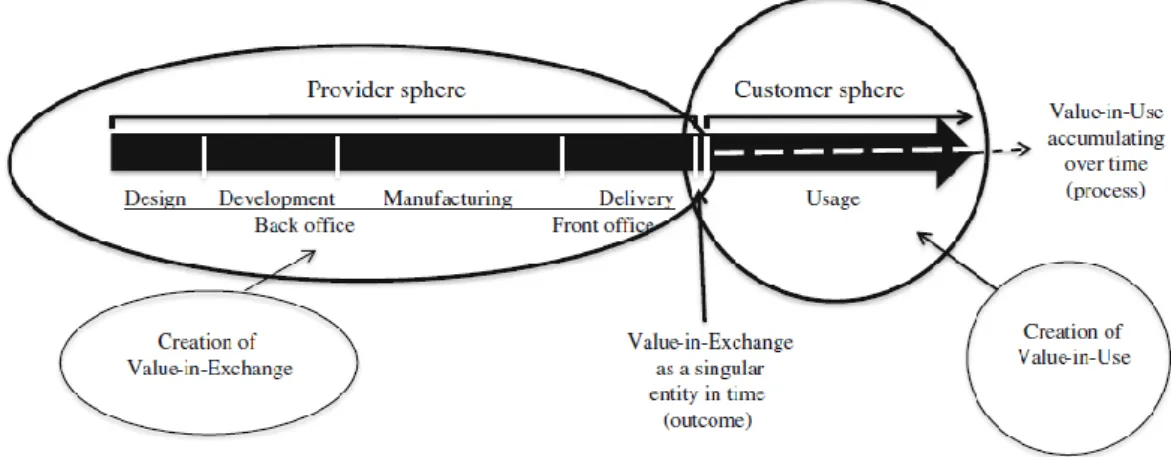
Customer-dominant Logic and value creation
Also, in S-D logic the purpose of value is service, while the extent of value in C-D logic is the customer's life. Understanding C-D logic is integral to this thesis, as it provides a comprehensive perspective of the customer's world.

New Service Development to create new services
Service concept to define the service
Yet the role of the service concept can be seen primarily as an integrator of the customer's world and the strategic intent of the organization. All in all, a clear and shared understanding of the nature of the service provided is necessary to create a service concept.
Lean startup as an agile concept
The service concept creation process has several elements, but Meiren and Burgen (2010) conducted a review identifying the elements that appear most frequently in the literature. Service development can be a long and multifaceted project, but the service concept brings structure to the development process.
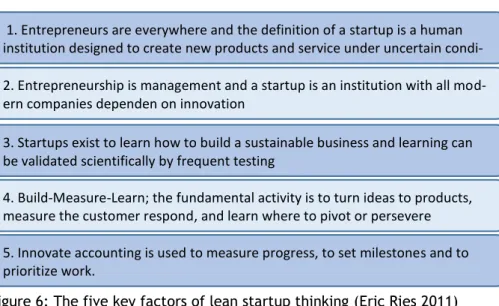
Design thinking as a mindset
Service design as an effective creation method
According to Moritz, service design is incorporated into the overarching design of the experience as a whole, specifically focusing on the process and strategy that delivers the service. Service design is about renewing existing services as well as creating new ones within iterative projects. According to Moritz, service design is an ongoing process that is translated into companies' business structures and processes.
Service design involves planning useful, desirable, effective and efficient service experiences for customers. According to Miettinen and Valtonen, service design plays a strategic role in co-creating value.
Service Design process
The first phase involves discovering possibilities and gaining an understanding of the service provider and services. The service design process begins with identifying a problem on which the service designer will focus. The prototype can represent the service using a poster, application or even a role play of the situation.
Employees can provide valuable input to the service design process, leveraging their roles as frontline troubleshooting and repair experts. The implemented service must be regularly evaluated with continuous developments to ensure that the service matches the customer's needs and expectations.
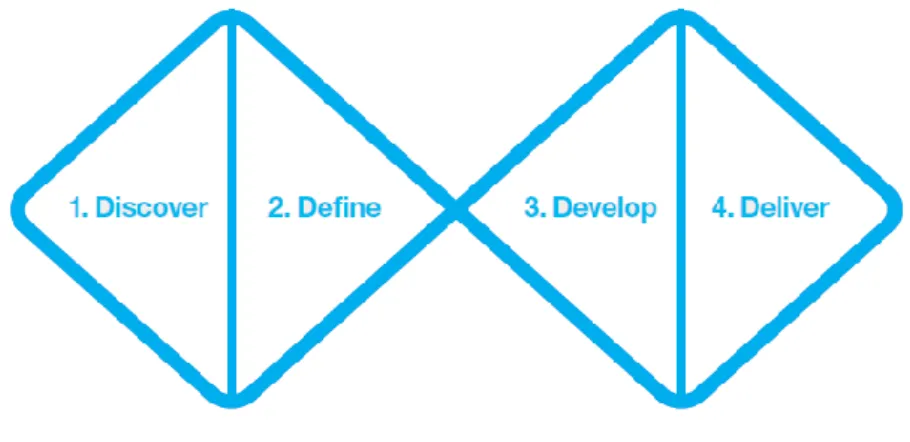
Combining design thinking and lean startup
In addition, design thinking begins with understanding, whereas the lean cycle does not have a clear beginning or end. For example, the lean term build fits well with the step prototype in design thinking. A combination of design thinking and agile startup can be seen as beneficial for this thesis project, providing support to the empirical part of this project.
A design thinking approach will focus on the idea aspect of the projects and an agile start of the development and scalability. It is a service development model that has adopted characteristics of both design thinking and lean.
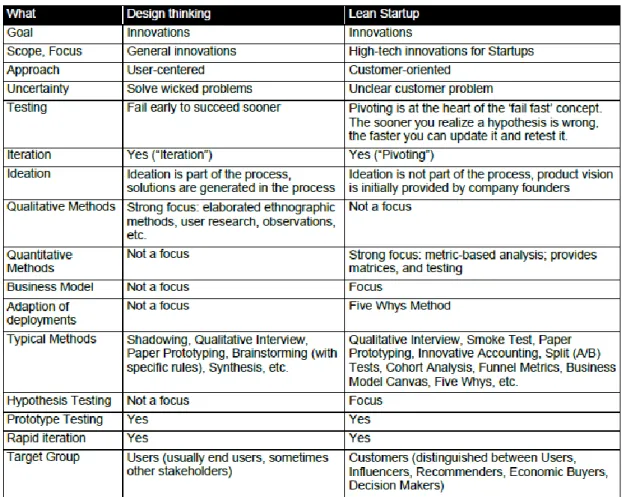
Summary of theoretical perspectives
Within this framework, the service-dominant logic creates a fundamental understanding of the customer focus required to create services. Consequently, in the context of the thesis, the logic of the dominant party suggests that FORGE development project teams should create services that concern users. In addition, combining design thinking and lean startup approaches will be useful in building the Service Design Coach concept (Mueller & Thoring 2013).
Design thinking will be used during the ideation part of the projects and lean start during the development and scalability pieces. The current chapter focuses on the empirical aspect of this thesis, which has its foundation in developmental research and the service design process.
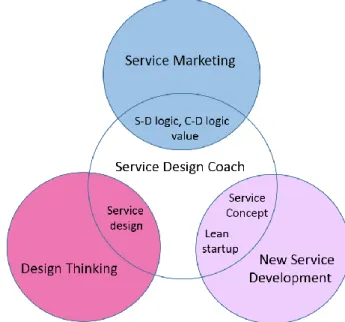
Discover the current state
- Observation as a tool and insights
- Contextual Interview as a tool and insights
- Customer Journey Map as a tool and insights
- Customer Perspectives as a tool and insights
- Summary of the first stage
The workshop observation provided a solid initial understanding of the early steps of FORGE Service Lab projects, providing insight into both the customer perspective and DIGILE processes. The third research stage involves visualizing the current customer experience using the customer journey map, a service planning tool. In addition to interactions, a journey map can also reveal a customer's emotional engagement throughout the service chain.
After mapping the customer journey, critical analyzes of the current state were possible. The initial step of the research design aimed to understand the current state of the FORGE Service Lab and gather customer insights regarding the service.

Define the learning
Contextual Interviews with professionals
A synthesis of the information gathered in the first phase suggests that DIGILE should strive to accelerate the time frame from idea to scalable implementation, and service design could bring the necessary customer perspective to the projects. The creation of a Service Design Coach concept could provide tools, frameworks and customer-oriented thinking for FORGE projects. According to the professional designers, service design is a creative process with intangible methods used to create something new.
A service design approach is valuable to companies, as it can reduce costs, minimize failures and accelerate projects. Several professionals expressed interest in creating service design packages for FORGE projects so that service design support is available for purchase.
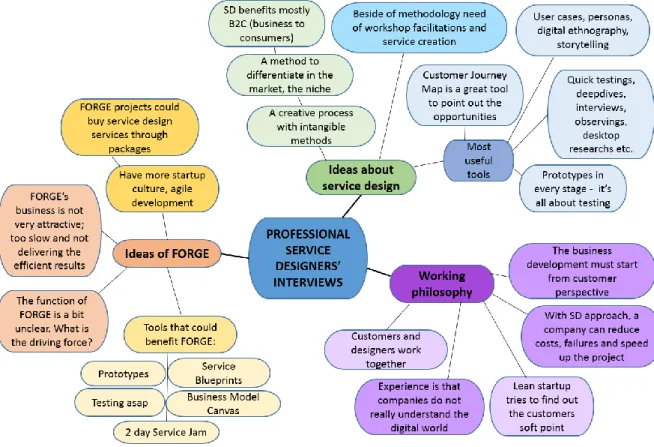
Ideation as a tool and insights
Each of the experts encouraged FORGE to use service design tools such as the business model canvas, which provides an understanding of the business as a whole; a plan that provides guidance on how to move forward in the process; a prototype that allows a more tangible vision of how the process will work in reality; and regular testing of the service, which creates opportunities for improvement. One interviewee even proposed a "two-day service backlog" where customers could develop their ideal service using agile methods and incorporating their perspectives, as opposed to the current approach where service planning support is split into different phases of the project process. . Next, specific steps for the Service Design Coach were prepared using information related to customer expectations, expert suggestions, and shortcomings of the current service process.
As shown in Figure 19, the actions of the Service Design Trainer begin with an introduction to service design, which creates an understanding of service design tools and their benefits. Ideally, service design would support the generation of ideas with new innovative methods and AT-.
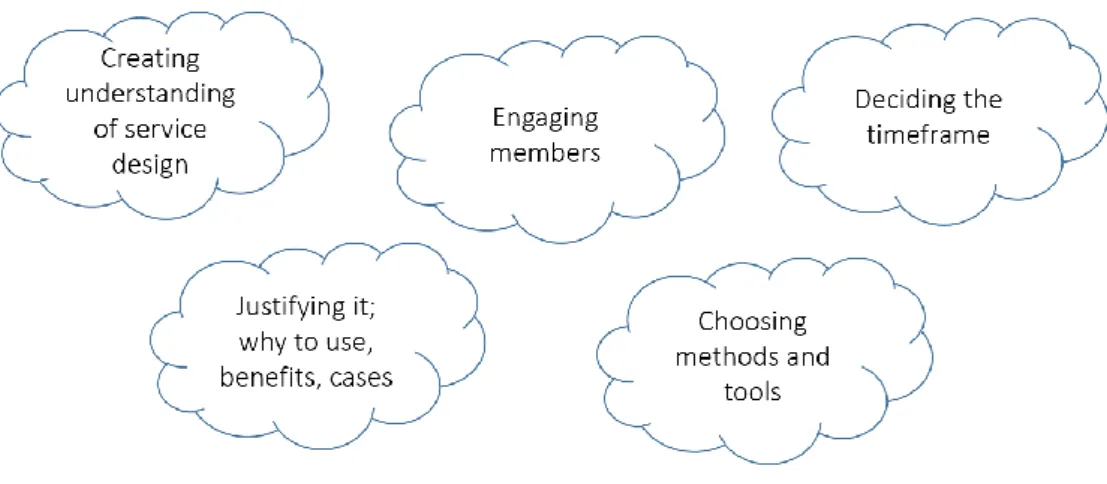
Summary of the second stage
The customer journey map or, alternatively, a blueprint or service path, can also be considered useful for FORGE customers who want to define a service from the customer's perspective.
Develop the concept
Prototype as a tool and insights
One part of the Service Design Coach concept, the customer journey map tool, was tested with project groups in June 2015. The facilitation of a two-hour customer focus workshop was planned, and after analyzing several existing customer journey canvas tools, a template unique to support needs of the workshop was designed by the researcher (Appendix 2). The template includes the definition of the persona, the description of the service experience and analysis of the service experience.
The intention was to improve the tool for the second workshop using feedback from the first workshop. The biggest challenge for the groups was the initial selection of a persona, as the group was concerned that their choice would force them to dismiss other potential user groups from the service.
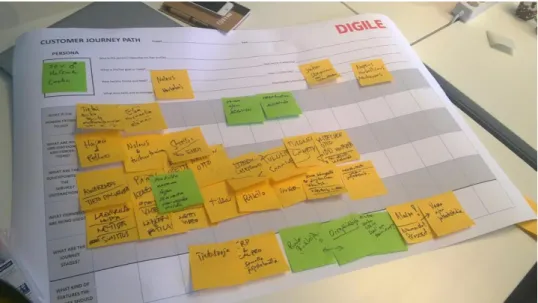
Iteration as a tool and insights
Evaluation of participant responses from the second workshop revealed that participants viewed the tool and workshop positively, enabling them to consider the service from a customer's perspective. Again, the most difficult task for the groups was choosing a person to represent the target group. The groups needed facilitators to fully understand and get on with the task, but there was a sufficient number of individuals present to provide support.
These workshops, each providing experience with the concept prototype, made the development of the final version of the concept possible.
The final concept of Service Design Coach
The Service Design Coach would represent one individual responsible for this process within the FORGE Service Lab. As proposed, this concept enables ongoing service planning support for FORGE Service Lab projects. The aim of the thesis was to create a Service Design Coach concept for a suitable company DIGILE and its FORGE Service Lab.
The purpose of the second research question was to determine the value of service design support for FORGE and its customers. In conclusion, service design support brings value to both FORGE Service Lab and its customers. The purpose of the third research question was to determine what type of service would support FORGE Service Lab projects.
The objective of the fourth research question was to identify the steps in the process performed by a Service Design Coach.

